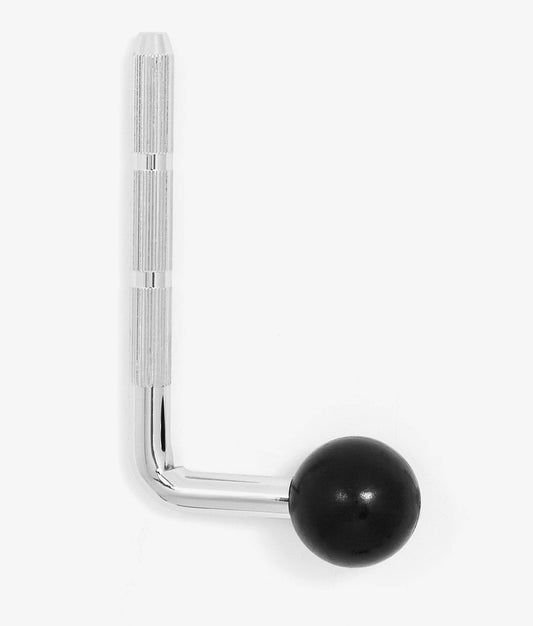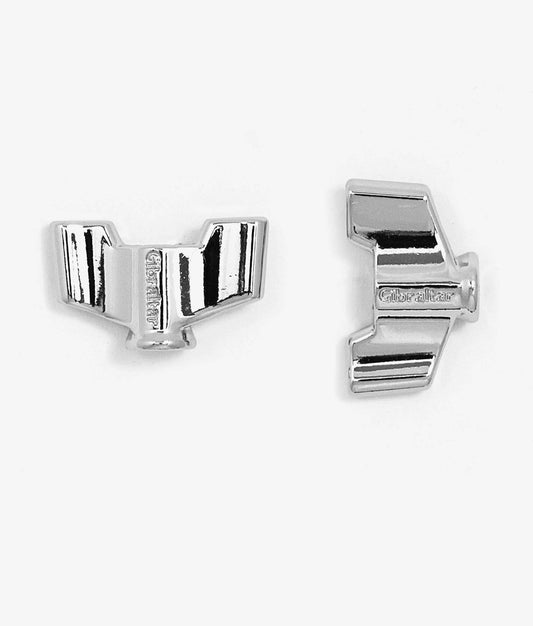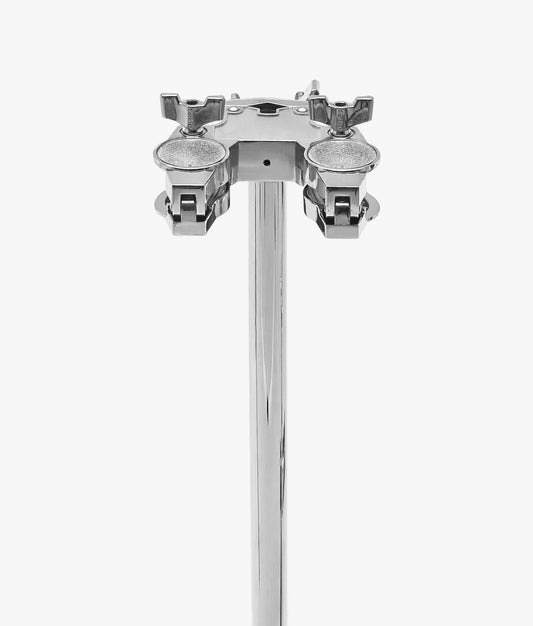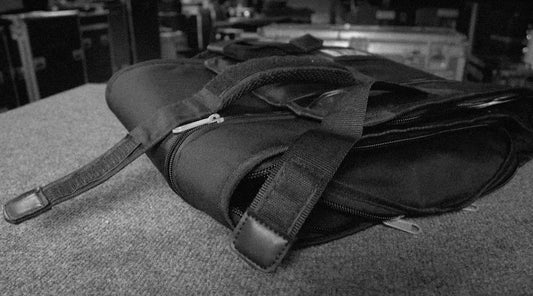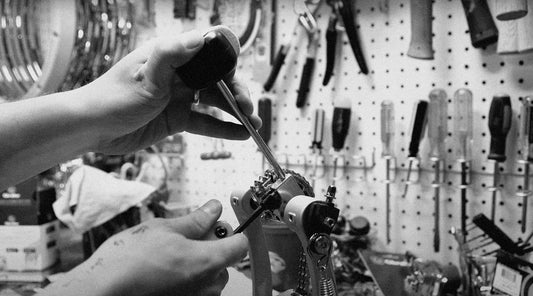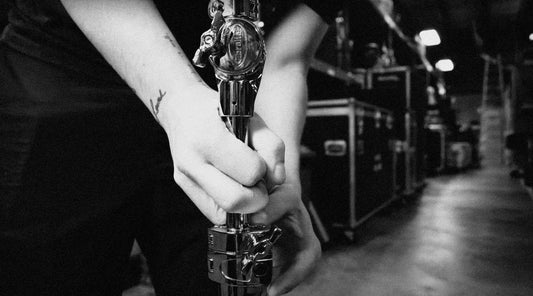The bass drum pedal is the most important mechanical gear to be invented for drummers. Its invention changed how musical combos made music and ironically put some drummers out of work! What was two drummer’s roles (a bass drum player and a snare drummer) in keeping time now became possible to be done by one. This may be the first instance of downsizing in music. Still, this innovative device led to the modern drum kit, consisting of a snare drum, bass drum, tom-toms, cymbals, and various assorted pieces of percussion, all played by a single player.
Overview
The invention of the foot-operated bass drum pedals allowed the snare drummer to keep steady time on the bass drum by themselves, eliminating the need for a singular bass drummer. As the jazz music of the day continued to evolve, the bass drum’s role changed from being a strict timekeeper to an integral improviser in the music. This continues to this day, with the bass drum driving the beat with innovative syncopations and punctuations, all within a timekeeping role played by one person.
What’s a bass drum pedal?
A bass drum pedal is a unique device with many components that make up the whole. Let’s start with what holds everything together, which is the frame. The frame consists of the pillars on each side of the pedal board and sometimes a plate that runs underneath called the base plate. When played, these parts stabilize the pedal and are what the other components are attached to.
The pedal board is where we place our foot and push down to drive the bass drum beater to strike the drumhead. The pedal board is attached to a cam via a strap, chain, or a direct drive system. A cam is an assembly that connects the drive to the beater. All three drives offer their own unique feel and performance. Chain drive pedals feel the direct and quick response in movement and come in single or double-chain models. The main difference here is in durability. Strap drive pedals offer super smooth action and reduced friction, leading to their lighter feel. Direct drive pedals provide a solid connection from the pedal board to the cam, eliminating any flexing or give that may happen with straps or chains. All three styles of drives are highly personal, and it’s worth your time to experiment with them to find what works best for your personal preference.
Bass drum pedals are attached to the bottom of the bass drum hoop via a hoop clamp, which is typically secured by a thumbscrew under the pedal board or on the side of the pedal plate.
A simple but crucial element of the pedal’s action is adjusting the tension. The pedal spring‘s tension determines the speed of return of the stroke of the beater and is adjusted by loosening or tightening the locking nut below the spring. The top part of the spring is attached to a rocker plate, which is connected to the drive axle that passes through the top of the pedal frame. This drive axle is where the bass drum beater is mounted.
Another vital adjustment to consider is how long the throw of the beater shaft is set. The longer the throw of the beater, the more powerful the impact. Experimentation is the key to finding what works best for your style and musical situation.
An important choice we have with bass drum pedals is the ability to choose different styles of beaters. Models of felt, wood, or plastic deliver varying degrees of attack and volume. Some beaters offer the option of more than one surface for a quick tone change without changing the beater to a different model.
Double Pedals
As the modern drum kit evolved, players began experimenting with adding additional tom toms and, eventually, a second bass drum. While innovative, this additional bass drum could be difficult to transport or fit onto smaller stages. The invention of the double pedal solved the problem of playing double bass drum patterns on one bass drum while achieving a smaller footprint on stage. These pedals feature a secondary footplate that controls a second beater connected to the primary pedal via a connecting rod. The connecting rod is adjustable width-wise to reach a comfortable place to place your feet.
Transporting your pedals
A pedal bag is highly recommended for transporting your pedals. These offer protection of your pedals by supplying a custom fit and padding in an easily carried bag. Bags also offer accessory pockets for beaters, tools, extra parts, and a shoulder strap for easy transportation. Bags also are a great way to store your pedals when not in use.
How to choose a pedal
When choosing a pedal, consider your playing style. If you play music that calls for a wide range of dynamics from very quiet to loud, consider a strap drive pedal for its light feel and quick response. Drummers playing louder and more aggressively may find a chain drive the better pedal for its power and speed. More technical players who want to feel the ultimate connection with the stroke of the pedal action might consider the direct drive models. The key here is to try all the models and select the pedal that feels best to you. The bass drum pedal is to the foot like the drumstick is to your hands, so choose what gives you the control and freedom to play your best.
Shop Bass Drum Pedals

